Once upon a time, during a storm, we hurriedly disconnected our most valuable home appliances from the power source. Everyone knew that they could be irreversibly damaged, although most of us had no idea why. To this day, many people, when they see lightning in the sky, disconnect their computer, washing machine or TV from the power supply, although in modern buildings electrical devices are usually well protected. Effective protection of the electrical installation and equipment connected to it is ensured by, among others: surge arresters. What is a surge arrester and how does it work? Which surge arrester should I choose for the planned network layout? Where and how to connect it? We answer!
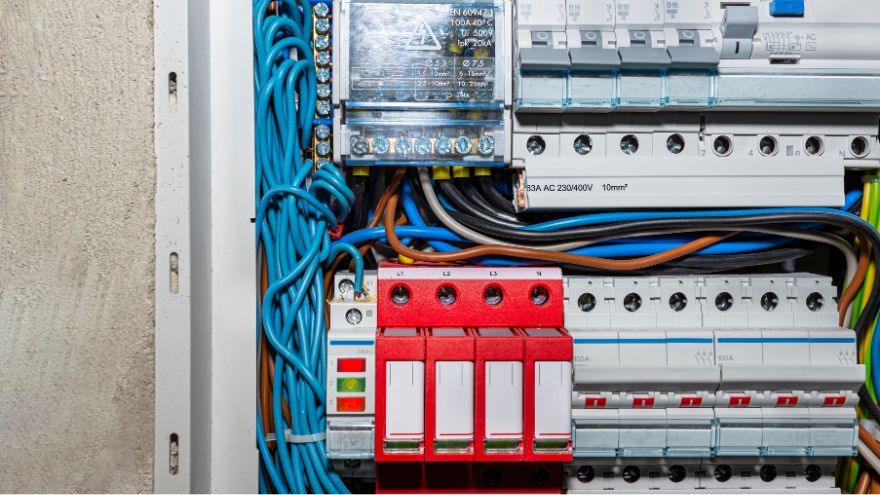
Check out surge arresters at the Onninen wholesaler
What is a surge arrester?
A surge arrester is a device used to protect electrical devices against transient overvoltages, i.e. against a sudden, short-term increase in supply voltage. The arrester limits the duration and frequency of the follow current. By blocking with induction coils or by short-circuit current, it effectively reduces the voltage to an acceptable, safe level. Standard surge arresters consist of a base and a replaceable insert with a spark gap (class B) or a varistor (class C). A spark gap surge arrester is the simplest and cheapest variant. The phase conductor and PE protective conductor are connected to the surge arrester.
Why are surge arresters used?
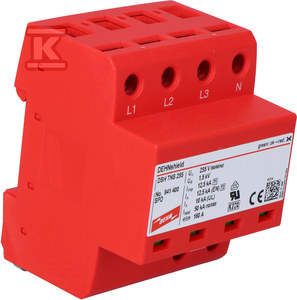 Surge arresters of all types are used to reduce overvoltages. Overvoltages can occur in various situations, e.g. during a storm, when lightning strikes an overhead line, or when switching on/off an unloaded overhead line. Overvoltages can damage insulation and destroy other elements of the electrical network. Modern electronics/home appliances are particularly sensitive to surges. Although complete physical destruction as a result of overvoltage rarely occurs in practice, interruption of work, resetting memory or problems with data transmission are real threats. No surge protection solution will provide a 100% guarantee of the safety of home appliances. However, the risk of threats can be effectively minimized. Is it enough to connect a surge arrester? Not necessarily...
Surge arresters of all types are used to reduce overvoltages. Overvoltages can occur in various situations, e.g. during a storm, when lightning strikes an overhead line, or when switching on/off an unloaded overhead line. Overvoltages can damage insulation and destroy other elements of the electrical network. Modern electronics/home appliances are particularly sensitive to surges. Although complete physical destruction as a result of overvoltage rarely occurs in practice, interruption of work, resetting memory or problems with data transmission are real threats. No surge protection solution will provide a 100% guarantee of the safety of home appliances. However, the risk of threats can be effectively minimized. Is it enough to connect a surge arrester? Not necessarily...
When is it worth using surge arresters?
Guidelines on the use of surge arresters in electrical installations are regulated by various legal acts and Polish Standards, in particular the Regulation of the Minister of Infrastructure of April 12, 2002 on the technical conditions to be met by buildings and their location (Journal of Laws of 2002 , No. 75, item 690, as amended) and the PN-IEC 60364-4-443 standard regarding surge protection in electrical installations. Pursuant to § 183.1 of the above-mentioned regulation, surge protection devices must be used in electrical installations .
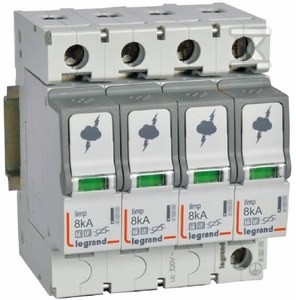 However, the legislator did not include a detailed definition of such devices or specific requirements in the legal act. Individual recommendations and guidelines regarding the use of surge arresters are often issued by manufacturers of electrical equipment and insurance companies. Installing a limiter may even be a condition for the insurer, seller or manufacturer to acknowledge liability in the event of damage resulting from overvoltage.
However, the legislator did not include a detailed definition of such devices or specific requirements in the legal act. Individual recommendations and guidelines regarding the use of surge arresters are often issued by manufacturers of electrical equipment and insurance companies. Installing a limiter may even be a condition for the insurer, seller or manufacturer to acknowledge liability in the event of damage resulting from overvoltage.
If you care about safety and do not want to constantly worry about the voltage supplied to expensive home equipment, it is worth investing in surge arresters - necessarily high-class, with parameters confirmed by tests/certificates. It is best to plan the selection of limiters and their location at the building design stage and entrust the installation to an experienced electrician.
It is important to mention situations where surge protection is not required because the expected costs of preventing the risks would likely be higher than the benefits. Detailed information on this subject is provided in one of the chapters of the PN-IEC 60364-4-443 standard.
Check out surge arresters at the Onninen wholesaler
Which surge arrester should I choose for my apartment?
It is impossible to answer this question unambiguously, because surge arresters must be adapted to the requirements of your devices and the specificity of a given electrical installation, in particular its layout. It does not matter whether we use a 3+0 or 3+1 surge arrester in the TN-C system. Therefore, the installation design, taking into account each arrester and the cross-section of the protective conductor, should be carried out by a qualified electrician.
Arresters intended for low voltage areas are divided into types/classes. It is recommended to install arresters of particular classes/types in buildings in cascade, i.e. gradually lower the voltage level.
-
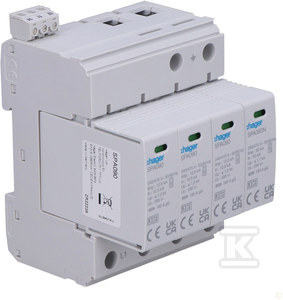 A type 1 (class B) arrester , commonly called a lightning arrester, provides home electronic equipment with protection against overvoltages caused by lightning striking a power line. Limits the voltage pulse to below 4 kV. Type 1 are spark gap surge arresters. The safety element is a spark gap.
A type 1 (class B) arrester , commonly called a lightning arrester, provides home electronic equipment with protection against overvoltages caused by lightning striking a power line. Limits the voltage pulse to below 4 kV. Type 1 are spark gap surge arresters. The safety element is a spark gap. - A type 2 (class C) limiter , commonly called a surge arrester, provides protection of the installation against sudden voltage surges (commutation overvoltages) of low values - from 1 to 1.5 kV. Its design includes a varistor.
- A type 3 (class D) arrester provides protection for specific electrical equipment that is most sensitive to overvoltages. It can be mounted in a switchboard, behind a contact in an electrical box or in the device itself.
On the market, including, of course, in our wholesale store, you will also find hybrid models, such as the B+C surge arrester , which is a combination of B and C protectors. It is used in electrical installations that may be directly exposed to lightning discharges.
Where to connect a surge arrester?
If you are looking for specific, uniform guidelines on where or how to connect a surge arrester, you will not find them, because the previously mentioned standard only contains general information on the installation of surge arresters in building installations. Most often, they are installed in the main switchboard as close to the connector as possible. Type 3 (class D) arresters can be located behind a socket in an electrical box or directly in the protected devices instead of in the switchboard.
Simply inserting a surge arrester into the switchgear is not enough. The key influence on the effectiveness of the implemented surge protection is actually the skill of the electrician and whether it is based on the current state of knowledge or on practices from 30 years ago.
Surge arresters at the Onninen wholesaler
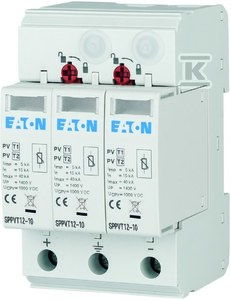 The Onninen electrical wholesaler offers a wide range of surge arresters - standard and less popular types - for business and individual customers. Our offer includes a DC surge arrester , commonly used in renewable energy and electric vehicles. You can choose from solutions from selected, renowned manufacturers and brands. You can buy from us, among others:
The Onninen electrical wholesaler offers a wide range of surge arresters - standard and less popular types - for business and individual customers. Our offer includes a DC surge arrester , commonly used in renewable energy and electric vehicles. You can choose from solutions from selected, renowned manufacturers and brands. You can buy from us, among others:
- Dehn surge arrester ,
- Hager surge arrester ,
- Eaton surge arrester ,
- Schneider surge arrester ,
- Legrand surge arrester ,
as well as various accessories: cables, clamps, lightning barriers, grounding connection blocks, protective devices and many others.
Remember that you can count on professional support from Onninen experts when purchasing appropriate products. We will help you choose safe and effective surge arresters and all accessories necessary for the project, including protective conductors with appropriate cross-sections. Write, call or visit us in person at one of our 36 branches.